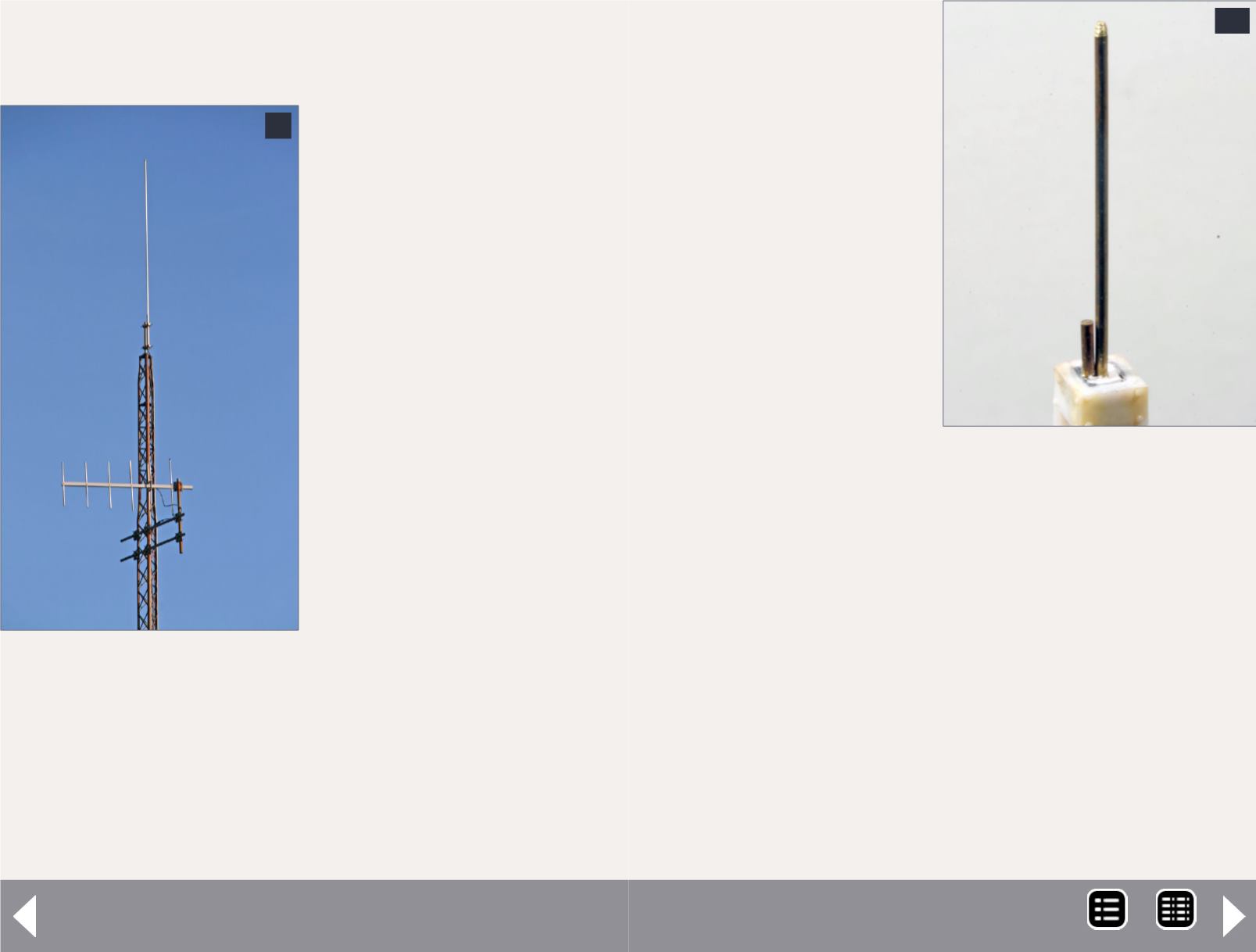
Radio base station - 5
basing them on the angle of view, the proximity to the
viewer, and the tower's surroundings.
For example, to create the
base antenna for my own
tower, I chose .033” diameter
brass rod (Detail Associates
#2509) whose scale diam-
eter is nearly twice that of
the typical prototype base
antenna. Likewise, I doubled
the typical 42-48” length,
which makes the thick
antenna appear thinner yet
still provides enough mass to
stand out amongst the trees
and busy backdrops.
After choosing an appropri-
ate size, it’s now simply a
matter of constructing the
antenna and its support
pipe, then adding them to
the top of the tower. Cut two
lengths of rod, the first to a
scale 24” and the second to
the desired antenna length,
adding 12 scale inches. Next,
drill two holes of the corre-
sponding rod thickness into
the top of the tower, locat-
ing the two side by side and
as close together as possible.
Cement the shorter rod in
place, allowing half of it to
extend from the top of the
tower to form the support
pipe. Then insert, but do
not cement, the antenna
rod into the hole adjacent
to the support pipe.
With both the antenna
and support pipe extend-
ing upward from the tower,
we can now fashion brack-
ets from styrene strip to tie
them together. Since very
little material is required,
almost any size of .015” or
.020” thickness styrene can
be used to form the brack-
ets, provided it is wider
than the rod diameter and
longer than the horizontal
measurement of the two
rods mounted side by side.
I chose two ½” long pieces of Evergreen .015” thick styrene
strip, which were slightly wider than the rod stock. The plas-
tic was left over from another project, now rescued from
scrapbox oblivion.
Begin by drilling two holes side by side, one for the support
pipe and the other for the antenna. Next, transform the
rectangular strip into a long triangular shape by cutting at a
downward angle from top to bottom, removing the excess
9: The Norfolk Southern
installation reveals a long
omni-directional whip
style located at the top
of the tower. The smaller
directional antennas have
the look of an older style
television antenna, often
referred to as yagis.
9
10
10: With both the antenna
and support pipe extend-
ing upward from the tower,
we can now fashion brack-
ets from styrene strip to tie
them together.
MRH-Jan 2014


